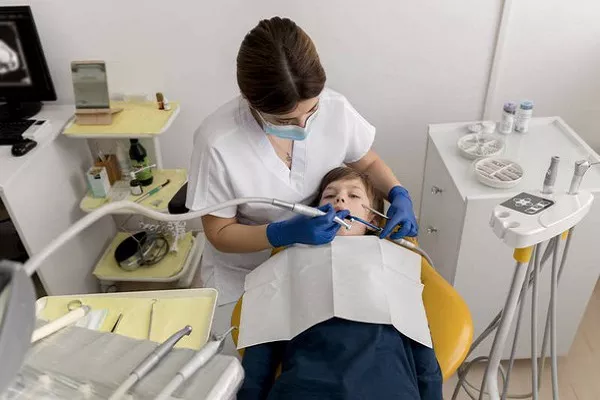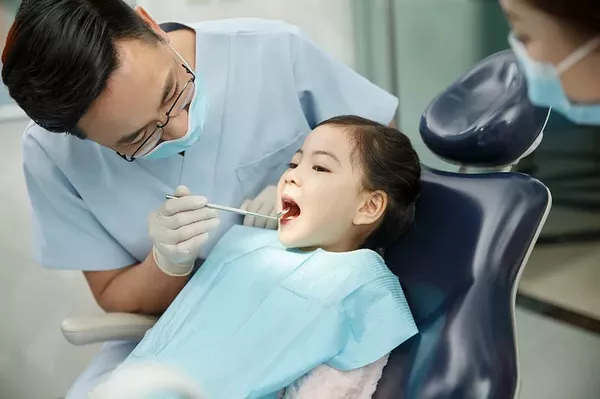Dental implants have revolutionized the field of dentistry, providing a durable and aesthetically pleasing solution for individuals with missing teeth. Among the various implant options, the “3 on 6” dental implant system stands out as a popular choice for those seeking a comprehensive and efficient tooth replacement solution. In this article, we explore the intricacies of 3 on 6 dental implants, shedding light on their unique features, advantages, and considerations for potential candidates.
I. Demystifying 3 on 6 Dental Implants: An Overview
Defining 3 on 6 Dental Implants
The term “3 on 6” refers to the number of dental implants used to support a fixed prosthesis or dental bridge. Specifically, three implants are strategically placed in each dental arch, providing a stable foundation for a six-unit bridge. This approach offers a middle ground between the conventional single implant-tooth ratio and the more extensive “All-on-4” or “All-on-6” implant systems.
Balancing Efficiency and Effectiveness
The 3 on 6 dental implant system is designed to balance efficiency and effectiveness in restoring multiple missing teeth. By strategically placing three implants on each arch, it optimizes support for a six-unit bridge while minimizing the number of implants required compared to full-arch solutions.
II. The Implant Placement Process: A Step-by-Step Journey
Initial Consultation and Evaluation
The journey with 3 on 6 dental implants begins with an initial consultation and thorough dental evaluation. The dentist assesses the patient’s oral health, evaluates bone density, and discusses the individual’s goals and expectations. This comprehensive evaluation helps determine the suitability of the patient for the procedure.
Strategic Implant Placement
Once deemed a suitable candidate, the dentist strategically plans the placement of three dental implants in each arch. The positioning is carefully calculated to optimize stability and support for the subsequent fixed bridge. Advanced imaging techniques, such as 3D cone-beam computed tomography (CBCT), may be employed for precise planning.
Surgical Implant Placement
The actual implant placement involves a minor surgical procedure. The dentist surgically inserts three dental implants into the jawbone at predetermined locations. These implants serve as artificial tooth roots, integrating with the surrounding bone through a process known as osseointegration. The surgical phase is typically performed under local anesthesia, ensuring patient comfort.
Healing Period
Following implant placement, a healing period is necessary to allow osseointegration to occur. This phase, which usually spans several weeks to a few months, ensures that the implants become securely fused with the jawbone. During this time, patients may wear temporary prosthetics or maintain their existing dental appliances.
III. Crafting the Prosthetic Bridge: Precision and Aesthetics
Impressions and Prosthetic Design
Once the implants have successfully integrated with the jawbone, the next step involves taking impressions of the implant sites. These impressions serve as the foundation for crafting a custom prosthesis. Dental technicians work closely with the dentist to design a six-unit bridge that aligns with the patient’s natural dentition and enhances facial aesthetics.
Fixed or Removable Prosthesis
The final prosthesis can be either fixed or removable, depending on the patient’s preferences and specific clinical considerations. Fixed prosthetics are securely attached to the implants and can only be removed by a dental professional, providing a more stable and natural feel. Removable options, on the other hand, allow for easier cleaning and maintenance.
Color Matching and Aesthetics
Crafting a prosthetic bridge involves meticulous color matching and attention to detail to ensure a seamless blend with the patient’s natural teeth. The goal is to create a restoration that not only restores function but also enhances the overall appearance of the patient’s smile.
IV. Advantages of 3 on 6 Dental Implants: A Comprehensive Solution
Efficient Tooth Replacement
The 3 on 6 dental implant system offers an efficient solution for replacing multiple missing teeth. By utilizing three strategically placed implants in each arch, it provides stable support for a six-unit bridge, minimizing the number of implants required compared to full-arch solutions.
Enhanced Stability and Functionality
The strategic placement of implants in the 3 on 6 system ensures enhanced stability and functionality. The distribution of support across six units allows for effective chewing, speaking, and overall oral function. Patients often experience improved comfort and confidence in their daily activities.
Preservation of Bone Density
Dental implants play a crucial role in preserving bone density by stimulating the jawbone through the process of osseointegration. The 3 on 6 system, with its strategic implant placement, contributes to maintaining the integrity of the jawbone and preventing the gradual loss of bone that can occur with tooth loss.
V. Considerations for Potential Candidates: Is 3 on 6 Right for You?
Patient Suitability
While 3 on 6 dental implants offer an efficient solution for many individuals, not everyone is a suitable candidate. Factors such as overall health, oral hygiene practices, and bone density play a pivotal role in determining candidacy. The initial consultation and thorough evaluation with a qualified dentist help assess whether this implant system aligns with the individual’s needs and goals.
Cost Considerations
The cost of 3 on 6 dental implants can vary based on factors such as the location of the dental practice, the materials used for the prosthetic bridge, and additional procedures that may be necessary. Patients should discuss the financial aspects with their dentist and explore potential financing options to make informed decisions.
Patient Expectations
Managing patient expectations is crucial in achieving successful outcomes with 3 on 6 dental implants. While the system provides an effective and aesthetically pleasing solution, patients should have realistic expectations regarding the duration of the treatment, the healing process, and the potential adjustments required during the prosthetic phase.
VI. Maintaining Oral Health Post-Implant: The Role of Care and Maintenance
Regular Oral Hygiene Practices
Maintaining optimal oral hygiene is paramount for the long-term success of 3 on 6 dental implants. Patients should adhere to regular brushing, flossing, and professional dental cleanings to prevent the accumulation of plaque and ensure the health of the surrounding tissues.
Professional Follow-Ups
Regular follow-up appointments with the dentist are essential for monitoring the health of the implants and prosthetic bridge. These appointments provide an opportunity for the dentist to assess the stability of the implants, address any concerns, and make necessary adjustments to maintain optimal function.
Potential Adjustments and Repairs
Over time, adjustments or repairs to the prosthetic bridge may be necessary. Wear and tear, changes in oral anatomy, or shifts in bite alignment can impact the fit and functionality of the bridge. Timely intervention by a dental professional ensures the continued success of the implant system.
VII. The Future of Dental Implant Technology: Advancements and Innovations
Technological Advancements
The field of dental implantology continues to evolve with technological advancements. Innovations in imaging techniques, materials, and prosthetic design contribute to enhanced precision, faster healing times, and improved overall outcomes. Staying informed about these advancements allows both patients and dental professionals to explore the latest options for tooth replacement.
Personalized Treatment Plans
Advancements in dental technology enable the creation of more personalized treatment plans. From computer-guided implant placement to digital impressions for prosthetic design, these technologies enhance the precision and efficiency of 3 on 6 dental implant procedures, leading to improved patient experiences.
Conclusion: A Comprehensive Solution for Tooth Replacement
In conclusion, 3 on 6 dental implants emerge as a comprehensive and efficient solution for individuals seeking to replace multiple missing teeth. The strategic placement of three implants in each arch, supporting a six-unit bridge, offers enhanced stability, functionality, and aesthetic benefits. As with any dental procedure, thorough evaluation, patient suitability, and realistic expectations are integral to the success of 3 on 6 dental implants.
This innovative implant system, with its balance of efficiency and effectiveness, contributes to the preservation of oral health and overall well-being. As technology continues to advance, the future holds promise for even more refined and personalized approaches to dental implantology. For now, individuals exploring tooth replacement options can confidently consider 3 on 6 dental implants as a viable and transformative solution for restoring their smiles.
How To Treat Gingivitis At Home
Can gingivitis be treated intensively at home?
Will treating gingivitis at home cause bacterial infection?































